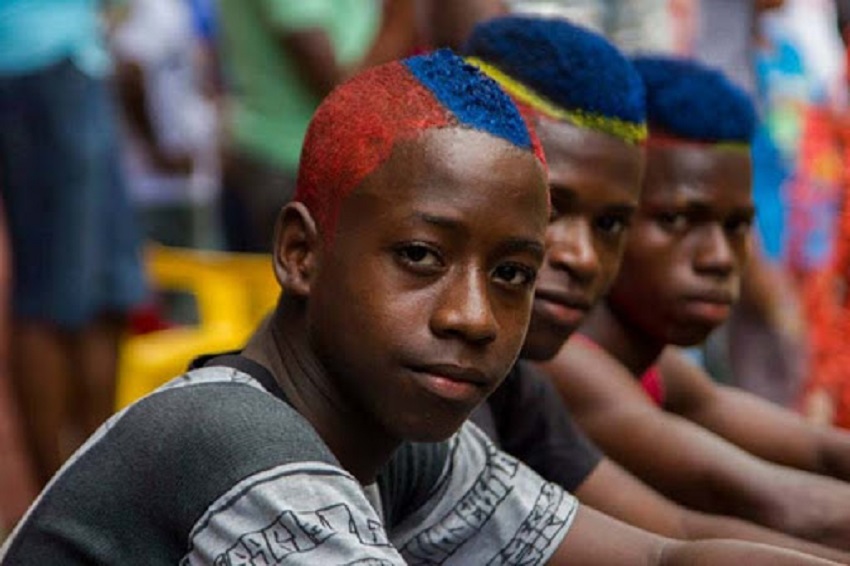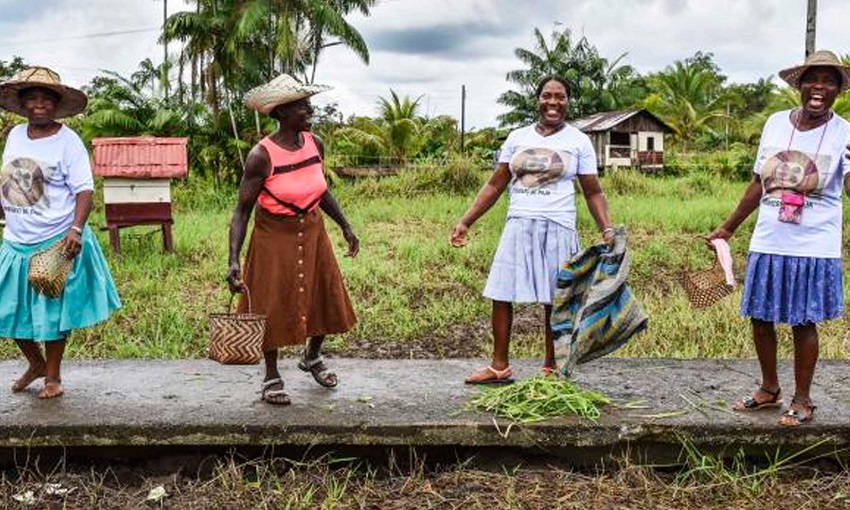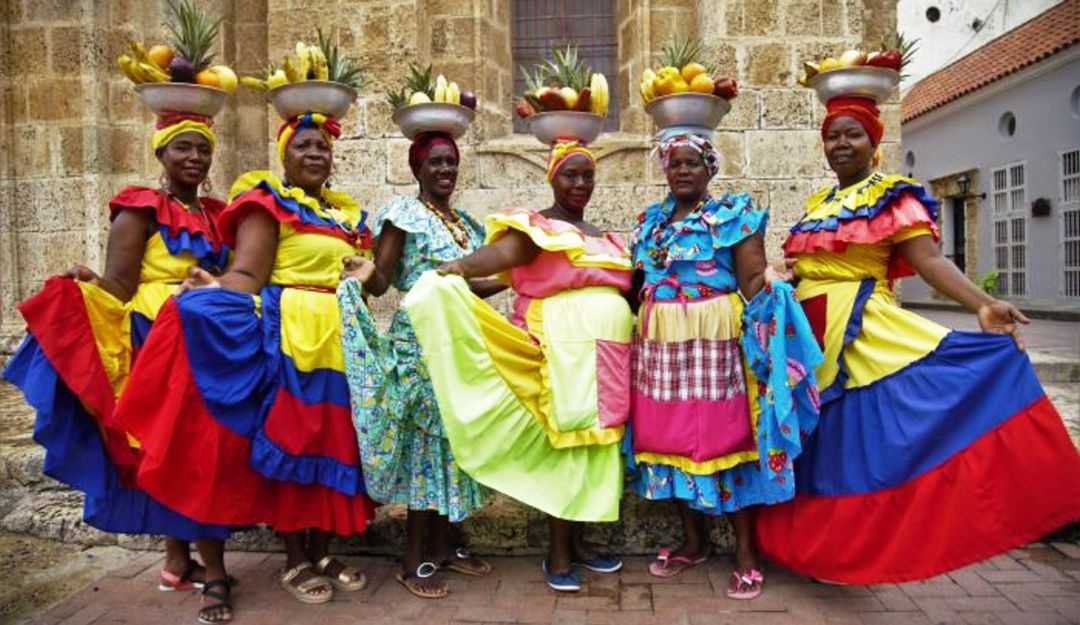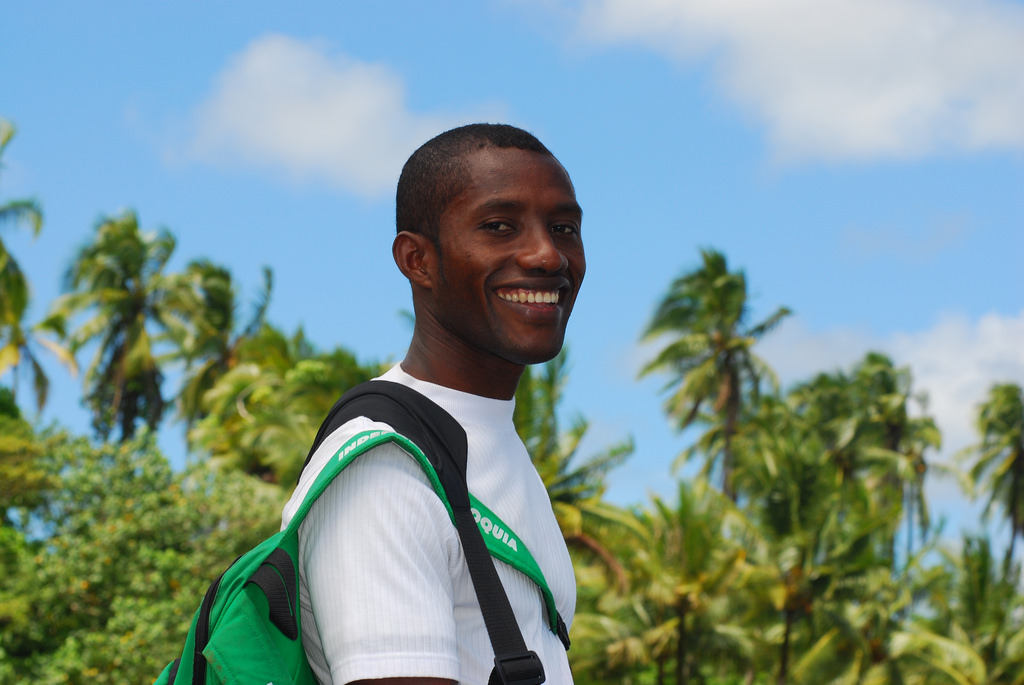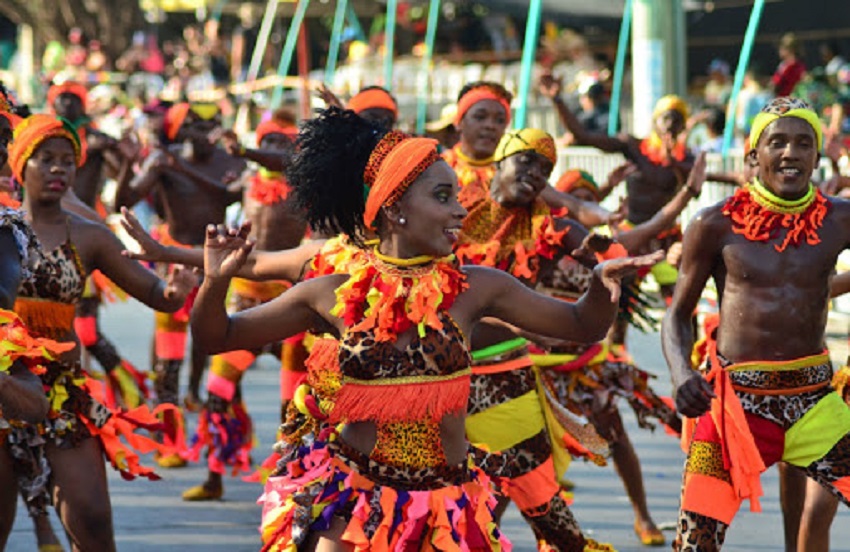Colombia is a multicultural country and one of the cultures is part of the identity of this nation, it is the Afro-Colombian Culture. Through this article, we invite you to learn a little more about the characteristics, traditions and customs, beliefs, and more of this interesting culture.
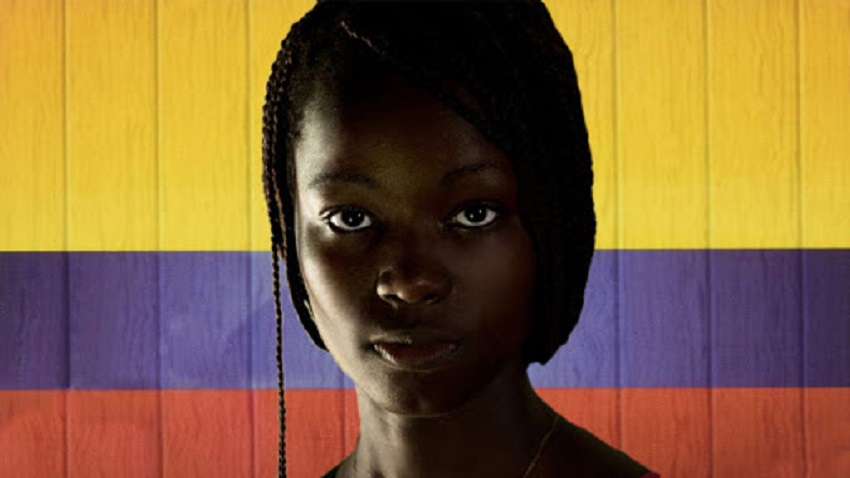
Afro-Colombian Culture
The term Afro-Colombians refers to people of African descent who live in various regions of Colombia; but in the same way, there are other local expressions that are very common to refer to as: blacks, morochos, brunettes, costeños, free people, people of color and Afro-descendants.
Blacks in Colombia are descendants of Africans, who were originally brought as slaves during the colonial period. Focusing mainly on three regions: the Pacific coast, the Caribbean coast and Valle del Cauca; In addition, Afro-descendants emigrated to cities such as Bogotá and Medellín. The entire Afro-Colombian population speaks Spanish, with the exception of the city of San Basilio de Palenque, where they also speak Palenquero.
Now yes, when we talk about Afro-Colombian culture, we refer to the set of customs and traditions of the Colombian people with Afro-descendants; In the country, Afro-descendant citizens represent 10,6% of the total population of this nation. For this reason, they are an important part of the demographics of Colombia, since their contributions and influences have been crucial for the culture.
The arrival of the large African population in Colombia began in the early 300th century, when British navigators traded slaves with the Spanish Crown in what was then New Granada. This practice continued for almost 1851 years, making Colombia the epicenter of the slave trade in South America. After the abolition of slavery in XNUMX, the Afro-Colombian population found it difficult to integrate into the country's society. In many cases, they remained in the coastal areas where they landed or on neighboring islands.
Despite the initial prohibition to manifest their customs on Colombian soil, the traditions of Afro-descendants have survived time, some have been modified after adapting to Colombian culture and others have been incorporated into the country's cultural heritage.
Historical review
In colonial times, due to the increasing disappearance of the natives, the Spanish King Carlos V authorized the introduction of Africans for forced labor in America. Thus, in 1518, some 200.000 slaves arrived from the first ship from Angola, Senegal, Guinea and Congo; which were divided between Ecuador, Venezuela, Panama, Peru and Colombia. Of that amount, only 80.000 entered through the port of Cartagena, where they were bought and taken to the national markets; among which were Popayán, Santa Fe de Antioquia, Honda, Anserma, Zaragoza and Cali.
In this context, Africans were used for mining, agricultural and slave work. In the late XNUMXth century, the Spanish conquered the Pacific coast, making it an important host region for slaves.
Therefore, the harshness of slavery varies from region to region, and the slave has the opportunity to take advantage of it for his own benefit, one day a week. Others could buy their freedom, which had been granted to them by their foreman, and some escaped when the areas were not protected; escaped slaves settled in fortified villages called quilombos or palenques, to defend themselves against Spanish missions. These places intensified in the XNUMXth century and also allowed people of African descent to join the fight for independence.
By the time Colombia became independent in 1819, the importance of slavery had diminished in many areas, although it was still essential in the Pacific and Cauca regions. Later, on May 21, 1851, slavery was abolished in Colombia and as a result, slaves became miners and haciendas of their former masters, especially in Antioquia and Cauca. In the Pacific region, people of African descent have become self-employed.
Afro-Colombian Communities
Afro-Colombian peoples have settled in areas close to their main ports. Because the coast in the north of Colombia is divided by Panama; however, groups of African descent are located on the coasts of the Pacific Ocean and on the coasts of the Caribbean Sea.
The departments of Chocó (82%), Bolívar (27%), Cauca (22%) and Atlántico (20%) are among the regions of Colombia with the highest density of Afro-descendants. The municipalities most populated by blacks are Santander de Quilichao (97.7%), María la Baja (97.1%), La Tola (96%) and Villa Rica (95%).
Also to the west of the Caribbean Sea is the archipelago of San Andrés, Providencia and Santa Catalina; which is one of the 32 departments of Colombia and its population of African descent is 56,98% in total. These West African-American communities are known as Raizales.
Palenque of San Basilio
Due to their status as slaves, the African peoples of the Americas were not allowed to demonstrate their customs or participate in local customs. During this stage, the slaves led by Benkos Biohó managed to escape to Colombia and formed their own community: Palenque de San Basilio.
Palenque is named by its inhabitants as "the first free city in the United States", because it was founded at the end of the XNUMXth century, when most of the continent was still colonized. Currently, they have managed to preserve their customs and their language; It is a site today called Intangible Cultural Heritage of Humanity.
Cultural characteristics
Identification
The term Afro-Colombian is a general category that refers to people with varying proportions of Afro-descendants who live in various regions of Colombia. In other words, within Afro-Colombians there are different subcultures, they do not have a unified culture.
For example, the indigenous inhabitants of the islands of San Andrés, Providencia, and Santa Catalina historically and culturally belong to a West Indian cultural complex formed under British colonial influence, but have been subjected to increasingly intense Colombianization since the early XNUMXth century. twentieth century.
Informal status and authority are acquired through seniority and personal traits. For example, character, experience, success in delivering goods, leadership ability. Certain decisions and conflict management are managed at this level.
family network
Afro-Colombians often have a loose kinship network, in which individuals and families are linked within an ill-defined lineage, often referred to simply as a family. Classifications of "cousin" or "aunt" can include many relatives.
Language
Because of their communication needs, people of African descent formed creole languages. A Creole language is a language that mixes different dialects; In addition, these are especially characterized among African slaves in America, who had to adapt to the language of the colonizers.
Once at their destination, the slaves were separated so that two people from the same tribe, family or region would not stay together. Thanks to this, Afro-descendants adapted their different languages, in addition to the Spanish, Portuguese, French or English spoken by their merchants, thus forming a Creole language.
In Colombia, the Creole language in Spanish is Palenquero Creole, which is mainly the dialect in Palenque de San Basilio. This language has 3.500 speakers. Likewise, in the Colombian archipelago it has San Andres Creole as its dialect, a language derived from English vocalized by the Raizales.
Geographic characteristics
As mentioned above, Afro-Colombian culture has taken root in three fundamental regions; Next, each of them will be detailed with their characteristics:
Pacifico
The primarily Afro-Colombian settlements in this region are riverside, lakeside, or coastal, and often widely dispersed. The houses are rectangular wooden constructions on stilts and with palm roofs. Some of the largest cities of Afro-Colombian culture include Quibdó, Tumaco and the Port of Buenaventura.
Cauca
Typically, Afro-Colombian settlements in Valle del Cauca are located in small peasant farms, towns, and villages. This is a population that feeds the labor force of the sugar cane industry; however, many of the individuals belonging to this area emigrated to cities such as Cali and Medellín, where they often live in neighborhoods built by themselves.
Caribbean
It represents the province where the Afro-Colombian community is more considerable. Commonly distributed along the coasts, they live in houses made of wood with a rectangular design; other settlements are further inland from the region, in cities or in very humble areas such as Barranquilla and Cartagena.
Economic activity
In economic terms, the activities used by this Afro-Colombian population vary according to each region where their settlement is primarily located.
Economic activities in the Pacific region include banana or corn cultivation, pig farming, fishing, hunting, and mining. In recent years, logging has become relevant as loggers sell the timber to middlemen; Likewise, some logging companies have established themselves in the region, using local labor.
In contrast, with the establishment of multinational companies, mining has become more mechanized, using the large-scale dredging technique. One of the conflicts in this area is that land ownership is not legally regulated; In this sense, the state maintains Afro-Colombians as illegal occupants of public lands, which results in easy unemployment of businessmen.
In the Cauca region, the industrial growth of sugarcane has resulted in intense pressure on the legal possession of land by farmers; as small farmers still grow cocoa, coffee and other subsistence crops for regular cash income. This growing restriction on peasants triggered migration to the cities of Cali, Medellín and Bogotá; where Afro-Colombians work as domestics, masons and informal professionals.
As for the Caribbean region, the vast extensions of cattle ranches existing in the colony employ Afro-Colombians as herders. In the coastal zone, fishing is the vital source of livelihood and cash income; as well as, tourism is another income-generating activity, with tasks such as boatmen or food sales. In addition, banana cultivation constitutes a fundamental productive environment for the region.
Customs and traditions
In a community, society or culture, it is very representative that there are customs and traditions since these elements become a symbolic part of the identity of the individuals that make up this group. In this case, we will detail a little the customs and traditions that surround the community. Afro-Colombian culture:
Music and dance
The particular sound of Afro-Colombian compases is percussion, the drums denote the beat to the fishery workers, who sing songs and dance as they carry out their tasks. From this custom comes the mapalé, a well-known Caribbean rhythm made by the slaves during their evening.
In the Pacific regions, in the departments of Chocó, Cauca and Nariño, the currulao is very popular; this is a rhythm marked by the use of various drums: drums, male and female cununos, bass drum, marimba, and clarinet.
On the other hand, champeta comes from the Afro-Colombian populations of Cartagena de Indias in the XNUMXth century; the term "champeta" comes from the name given to the machete or knife; the upper classes gave it in a pejorative way, since both elements are associated with poverty and dark skin.
Celebrations
Among the various Afro-Colombian celebrations, perhaps the most popular is the Barranquilla Carnival. It has its origins in colonial times and is part of the celebration of African culture; its characteristic elements are the masks and the dance to the rhythm of the congas, this is celebrated four days before Ash Wednesday.
In Colombia, May 21 is the Afro-Colombian day, which was named on the same date as the abolition of slavery and its celebration aims to honor the innumerable cultural contributions that Afro-descendants have made to the country.
Gastronomy
The Afro-Colombian dishes themselves have a proven resemblance to those of Central Africa; In addition, they are made with ingredients that abound on the Pacific and Caribbean coasts. Afro-Colombian food is mainly made up of shellfish, rice, beans, fruits and vegetables.
Continuing the tradition of the old continent, in the dishes it is customary to combine proteins with sweet and spicy palates, all in a casserole; An example of this is the aphrodisiac rice consists of rice, coconut, molluscs, prawns and lobster. Similarly, tropical fruits are generally eaten in large quantities; as is the case with coconut and banana, which are an important part of Colombian cuisine, and chontaduro, a fruit endemic to Colombia and Panama, which is regularly consumed in juices.
Beliefs
Afro-Colombian culture is generally distinguished by a syncretism between Catholic beliefs resulting from evangelization and convictions of African origin. Since slavery, Afro-Colombians celebrate their rites on the day off given by their masters, mocking and representing themselves.
Over the years, Catholic festivities have been replaced by festivals of African descent. Many have become traditions, such as the carnivals that precede Ash Wednesday, which marks the beginning of Lent. As an example, the Barranquilla Carnival is a fusion of the secular with the sacred, characterized by flashy costumes and colorful outfits. The consecration to the Virgen del Carmen in Quibdó is celebrated through land, water and processions.
For Afro-Colombian culture, the religious world is constantly expressed in life, through expressions of faith and action; These dogmatic expressions are given out of devotion to saints, prayers, legends, images, symbols and rituals with moral teachings.
These practices include the use of magic and sorcery to attack enemies or bring good luck; witchcraft is also used against envy, the conquest of an impossible love or obtaining a salary increase.
Despite this, the culture has assimilated the fundamental characteristics of Catholicism, such as love of God and neighbor; the sacred meaning of life, dignity, solidarity and celebration also present. The relationship with God is expressed through mediators such as the Virgin, the saints or the deceased summoned in celebrations of a supernatural nature. In them, essential ingredients such as music, dance and joy come together to give birth to a communion with God. All this shapes the spiritual heritage that characterizes this culture.
If you found this Afro-Colombian Culture article interesting, we invite you to enjoy these others:
